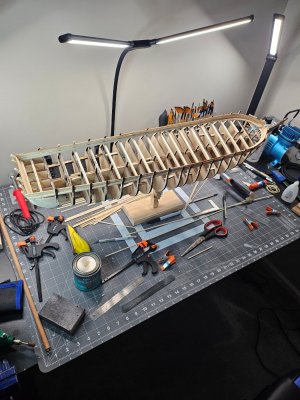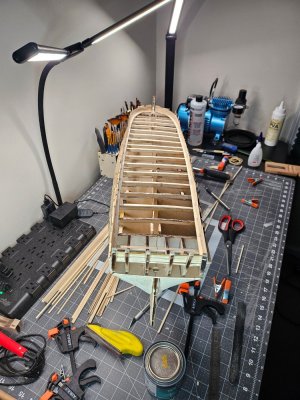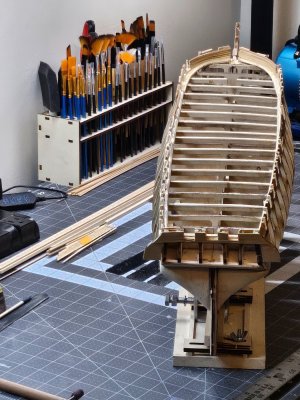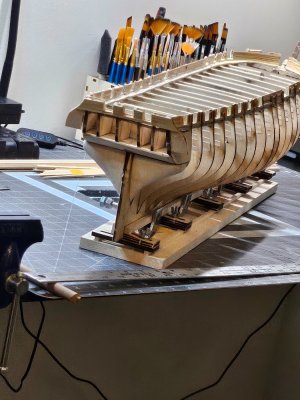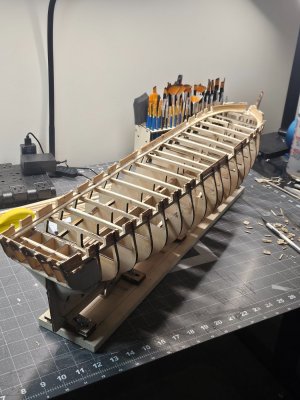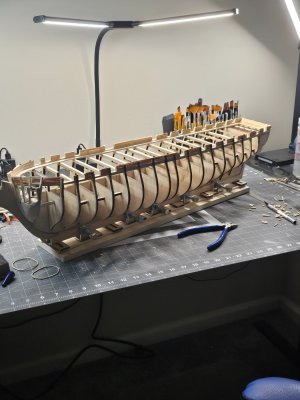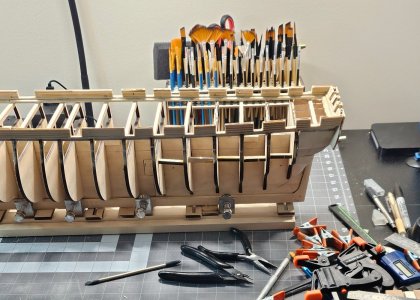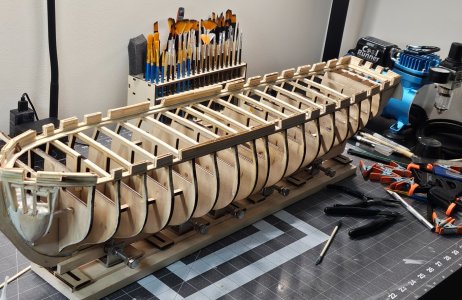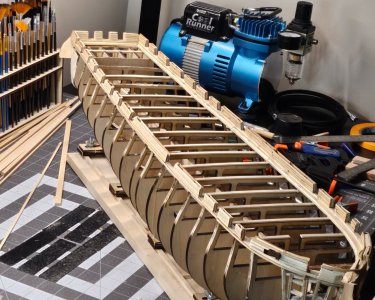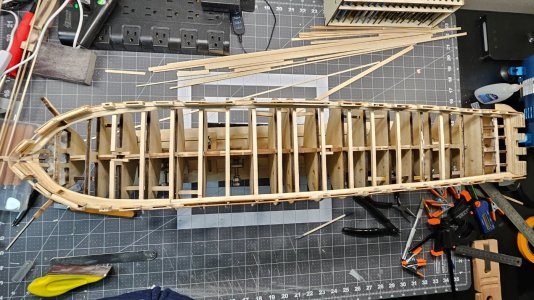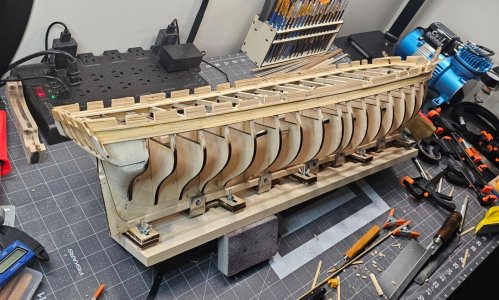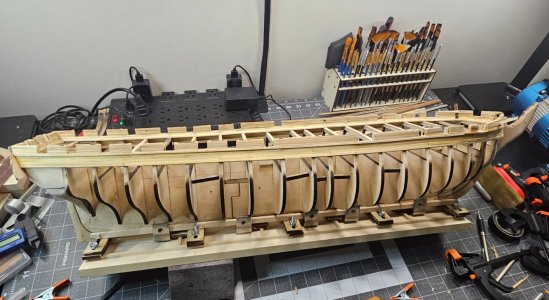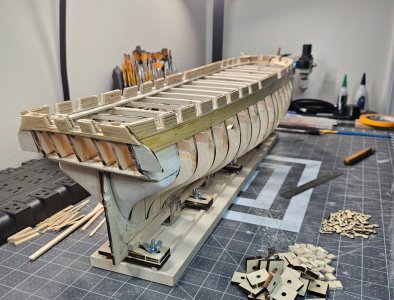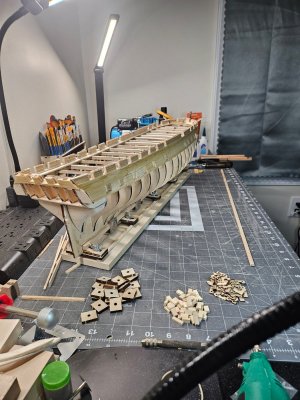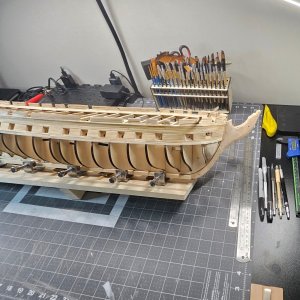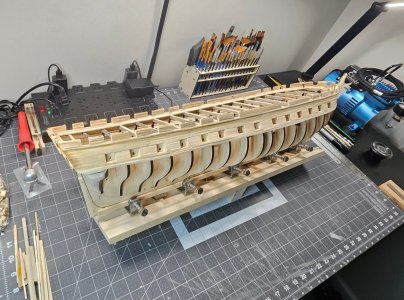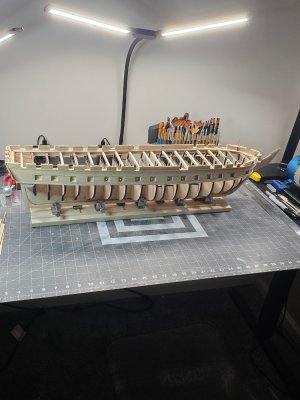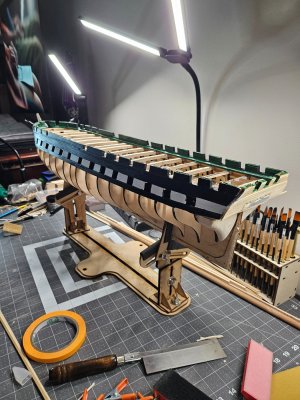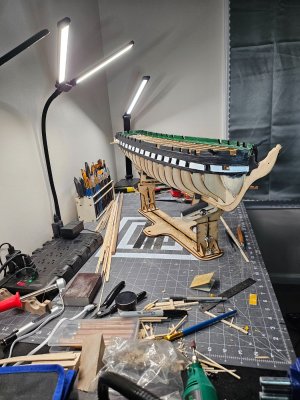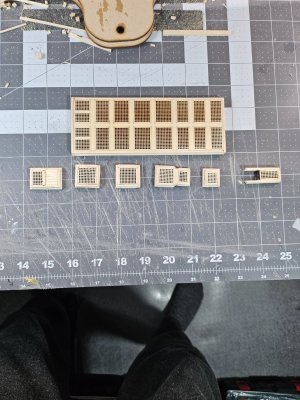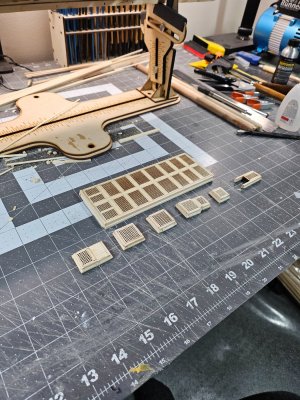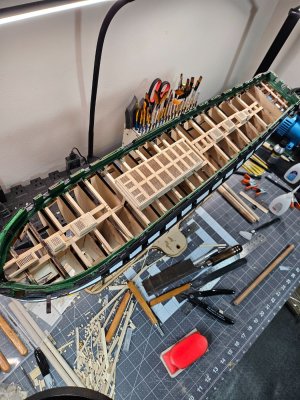The USS Constitution is my second wooden square rigged ship and my second using Robert Hunt's practicums. For the first model, the Mamoli Rattlesnake, I followed Mr. Hunt's practicum almost religiously, as I knew nothing about build wooden models or rigged ships. As the model progressed, I began to realize that there were other ways (some better, some not so much) of doing things. It was then I discovered model building sites and was able to see how others tackled various tasks and problems and I was able to take their ideas and compare them to Mr. Hunt's. Sometimes I followed the practicum, sometimes I didn't. I will say this, I could not have built the Rattlesnake without his help.
For the Model Shipworld USS Constitution, I again bought his practicum but this time, I used it as a guide, not as an absolute set of instructions. I checked many other builders models before I made a move on my own model. Because I kitbashed the Conny, I didn't have his expertise to follow and I relied a lot on other builders. For this model Mr. Hunt took a lot of shortcuts - skipped certain details, built only one side of the ship and didn't even rig it, which is why you don't see images of a completed model. But again, I could not have built what I have without his help.
The point of all of this, do not take his instructions as definitive, use them as a guide, suggestions, or inspirations.
BTW, you're doing great so far.
Jon
For the Model Shipworld USS Constitution, I again bought his practicum but this time, I used it as a guide, not as an absolute set of instructions. I checked many other builders models before I made a move on my own model. Because I kitbashed the Conny, I didn't have his expertise to follow and I relied a lot on other builders. For this model Mr. Hunt took a lot of shortcuts - skipped certain details, built only one side of the ship and didn't even rig it, which is why you don't see images of a completed model. But again, I could not have built what I have without his help.
The point of all of this, do not take his instructions as definitive, use them as a guide, suggestions, or inspirations.
BTW, you're doing great so far.
Jon






